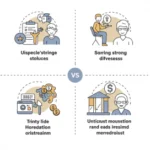Introduction: What Is COBRA Insurance?
If you’ve recently lost your job or experienced a reduction in work hours, you might be eligible for COBRA health insurance. COBRA, short for the Consolidated Omnibus Budget Reconciliation Act, is a federal law that allows you to continue your employer-sponsored health coverage for a limited time after leaving your job.
But how does COBRA work? Is it expensive? And how do you enroll?
This article will walk you through the key points of COBRA: who qualifies, what it costs, what it covers, and how to sign up.

What Does COBRA Health Insurance Cover?
COBRA doesn’t give you a new insurance plan. Instead, it extends the exact same group health plan you had while employed. That means the benefits, deductibles, provider networks, and coverage rules stay the same.
Coverage typically includes:
- Hospitalization
- Doctor visits
- Prescription drugs
- Preventive care
- Mental health services
- Vision and dental (if included in your previous plan)
In other words, COBRA allows you to keep the same health benefits, just for a limited time—and at your own expense.
Who Is Eligible for COBRA?
You may qualify for COBRA if your employer has 20 or more employees and you were enrolled in their health plan before losing coverage due to a “qualifying event.”
Common qualifying events include:
- Voluntary resignation
- Involuntary termination (except for gross misconduct)
- Reduction in work hours
- Divorce or legal separation from the covered employee
- Death of the covered employee
- A child aging out of a parent’s plan (usually at age 26)
Family members covered under the plan (spouse or children) may also be eligible for continued coverage through COBRA.
How Long Does COBRA Coverage Last?
The typical duration for COBRA coverage is 18 months. However, in certain circumstances, coverage can be extended:
- Up to 29 months if the beneficiary is disabled
- Up to 36 months for other qualifying events, such as divorce or death of the primary policyholder
It’s important to remember that COBRA is temporary and intended as a bridge—not a long-term solution.
How Much Does COBRA Cost?
Here’s where COBRA can be challenging for many people.
When you’re employed, your employer often covers a significant portion of your health insurance premiums. Under COBRA, you’re responsible for the full premium cost—plus a 2% administrative fee.
Example Cost Breakdown:
Let’s say your employer plan costs $600/month, but your employer paid $450 of that. You were paying just $150/month while employed.
Under COBRA, you’ll now be responsible for the entire $600 + 2% fee = $612/month.
So while the coverage is the same, the financial burden shifts entirely to you.
Advantages of COBRA Insurance
1. Seamless Coverage
You keep the same doctors, hospitals, and medications. There’s no gap in coverage or need to switch plans.
2. No Need to Reapply or Qualify
Because it’s an extension of your previous coverage, there’s no medical underwriting or application process. Even people with pre-existing conditions are accepted.
3. Good for Short-Term Needs
If you’re only unemployed for a few months, COBRA can be a convenient way to maintain your benefits until your new job starts.
Disadvantages of COBRA Insurance
1. High Cost
As mentioned, the biggest drawback is price. COBRA can be prohibitively expensive, especially without a steady income.
2. No Subsidies
ACA marketplace plans may offer tax credits or subsidies that lower your monthly premium. COBRA does not.
3. Limited Timeframe
It’s only available for 18–36 months, depending on your situation.
4. Not Available from Small Employers
If your employer has fewer than 20 employees, they’re not required to offer COBRA. Some states have “mini-COBRA” laws, but not all.
How to Enroll in COBRA
- Wait for Your Employer’s Notice
After your job loss, your employer has 30 days to notify their health plan administrator. - Receive COBRA Election Notice
You’ll then get a COBRA election notice in the mail—usually within 14 days after the administrator is notified. - Make Your Decision Within 60 Days
You have 60 days from the date of the notice (or from the date your coverage ends, whichever is later) to enroll. - Pay Your Premium
Coverage is retroactive to the day after your coverage ended, but only if you pay the first premium on time.
Alternatives to COBRA
Before choosing COBRA, it’s smart to compare other options:
- ACA Marketplace Plans: May be more affordable with subsidies
- Spouse’s Health Plan: You may be eligible to join your spouse’s employer plan
- Medicaid: If your income qualifies
- Short-Term Insurance: Temporary, but limited in coverage
(See related article: Is Short-Term Health Insurance Worth It?)
When Is COBRA a Good Choice?
COBRA might be a smart option if:
- You’re in the middle of ongoing treatment or have upcoming procedures
- You need to keep your current doctor or medication plan
- You expect to get a new job with benefits soon
- You can afford the full premium cost
But if you’re looking to reduce expenses or need longer-term coverage, an ACA marketplace plan could be a better fit.

Conclusion: Is COBRA Right for You?
COBRA health insurance offers peace of mind and continuity—but at a high price. It’s a good fit for short-term situations or people with complex health needs who can afford the premiums.
Before enrolling, compare your options and weigh the cost vs. the benefits. Don’t rush the decision—you have 60 days to choose.

Hi, I’m Hibiki — the writer behind HealthManual.net.
I cover health insurance news, wellness tips, and insightful analysis of pharmaceutical and healthcare stocks. My goal is to simplify complex topics and make health and finance information more accessible to everyone.
Thanks for reading — I hope you find the content helpful and reliable.















